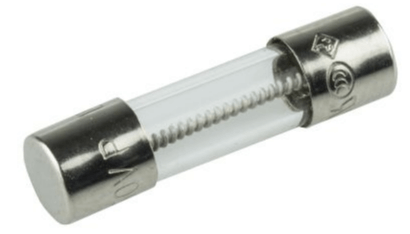Types of fuses are essential components in electrical systems, designed to protect circuits and connected loads from damage while ensuring safety. Fuse play a vital role in protecting electrical circuits and connected loads from damage and preventing potential hazards. Thomas Alva Edison first invented the fuse, but in modern times, his invention has been updated in various ways, and different types of fuses are available in the market. In this article, we will discuss how many types of fuses there are and the characteristics of each type.
Fuses or cut-outs are essential for protecting the electrical circuits connected to loads from burning out and keeping valuable lives safe from danger.
We have previously learned important information about fuses; read the previous article in detail from the link below.
How many types of fuses are there?
The types of fuses are shown below in the form of a table.

Generally, there are two types of fuses:
- DC Fuse
- AC Fuse
1. DC Fuse
DC fuses are generally larger in size. We know that DC supply typically flows at a constant level, i.e., above 0 volts. Due to this, electrical arcs can occur when the fuse is interrupted. To avoid these arcs, electrodes are placed at a greater distance, making DC fuses larger in size.
2. AC Fuse
AC fuses are smaller in size. We know that AC supply fluctuates between minimum and maximum voltage 50 or 60 cycles per second. This reduces the chance of arc formation in AC fuses.
AC fuses can be further divided into two categories:
- Low-voltage fuse
- High-voltage fuse
Low-voltage Fuse
Cartridge Fuse
A cartridge fuse is a tube made of porcelain or glass. The fuse wire is placed inside the tube and filled with silica powder, sealed with caps on both ends.

The terminals at both ends are connected to metal plates, which are secured to the main switch using screws. When this fuse blows, black smoke marks appear inside the glass tube.
Cartridge fuses are further divided into two types:
- D-type fuse
- Link-type fuse or HRC fuse
HRC – High Rupturing Capacity Fuse
This is a high-breaking capacity fuse. The fuse wire is typically made of silver and encased in a glass or porcelain tube. The ends of the tube are capped with brass or copper, which allows the fuse to be easily inserted and removed.

This type of fuse is available in amperage ratings from 2A to 800A.
Rewireable Fuse
This is a standard fuse. The fuse base and holder are made of porcelain. The fuse holder has two terminal screws that connect the electrical circuit to the power supply line. The fuse bridge or holder has two contacts that fit into specific slots in the fuse holder.

The fuse wire is connected to the terminal screws in the fuse base and inserted into the contacts. These fuses are available in ratings from 1A to 300A. The fuse wire size should be 1.5 times the full load current.
Drop-out Fuse
These types of fuses are used for outdoor transformer protection. When a fault occurs in the system, the fuse blows and falls to the ground.

High-voltage Fuse
High-voltage fuses are used for voltage ratings from 1.5 kV to 138 kV. These fuses are used to protect small and large transformers. They are similar to low-voltage fuses but with different design features.
Other types of fuses include:
Cellulose Fuse
This type of fuse is used in circuits with low current. It has metal caps on both sides for contact and is also known as a micro fuse, with ratings typically from 1A to 50A.
Plug Fuse
This type of fuse looks like a plug. It contains silica and is connected with a fuse wire. The head is threaded and made of porcelain. It is available in ratings from 1A to 50A.

In addition to these, there are various other types of fuses available in the market.
1. What are the types of fuses in electrical systems?
There are two main types of fuses used in electrical systems:
AC Fuses: Used in alternating current circuits.
DC Fuses: Used in direct current circuits.
These are further categorized into high-voltage and low-voltage fuses, depending on the application.
2. What are the different types of fuse boxes?
The most common types of fuse boxes include:
Rewireable Fuse Boxes: Allow for replacement of the fuse wire after it blows.
Cartridge Fuse Boxes: Use replaceable fuse cartridges that are safer and easier to replace.
3. What are the types of fuse wire?
Fuse wires come in different materials and ratings depending on their applications. Common types include:
Copper Fuse Wire
Tin Fuse Wire
Silver Fuse Wire
The size of the fuse wire is determined based on the current-carrying capacity needed.
4. What are the types of fuses in electronics?
In electronic devices, the following types of fuses are commonly used:
Glass Tube Fuses: Typically used for low current applications.
Ceramic Fuses: Designed for high voltage applications.
Surface Mount Device (SMD) Fuses: Used in compact electronics like laptops and phones.
5. What are the different types of fuses with images?
There are several types of fuses, and each can be visually distinguished by their structure. Common types include:
Cartridge Fuse
HRC Fuse
Drop-Out Fuse
Each type of fuse comes with a unique design to suit its specific function, often illustrated in diagrams to show the internal structure and connections.
Read more:



